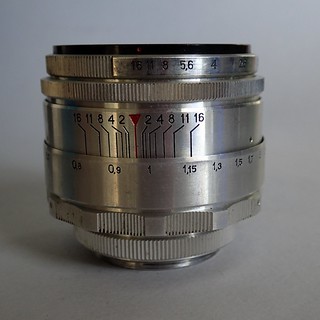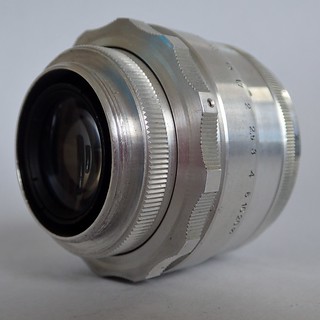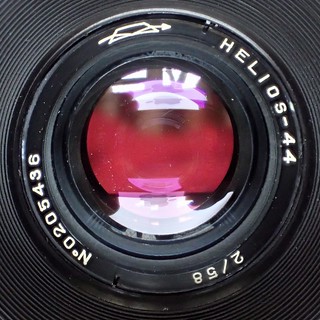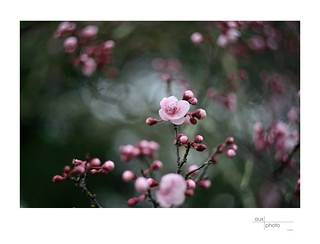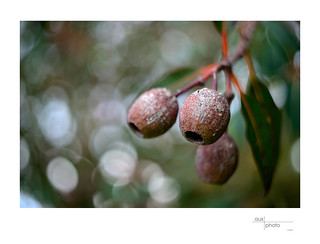Difference between revisions of "User:Heritagefutures/WorkSpace3"
(→Dekko) |
(→Technical Specifications) |
||
| (118 intermediate revisions by the same user not shown) | |||
| Line 1: | Line 1: | ||
| − | = | + | ==Helios 44 == |
| − | |||
| − | |||
| − | |||
| − | |||
| − | |||
| − | |||
| − | |||
| − | |||
| − | |||
| − | |||
| − | |||
| − | |||
| − | |||
| − | |||
| − | |||
| − | |||
| − | |||
| − | |||
| − | |||
| − | |||
| − | |||
| − | |||
| − | |||
| − | |||
| − | |||
| − | |||
| − | |||
| − | |||
| − | |||
| − | |||
| − | |||
| − | |||
| − | |||
| − | |||
| − | |||
{{Flickr_image | {{Flickr_image | ||
| − | |image_source= http://www.flickr.com/photos/heritagefutures/ | + | | image_source= http://www.flickr.com/photos/heritagefutures/20429889789/in/pool-camerawiki |
| − | |image= http:// | + | |image=http://farm1.staticflickr.com/689/20429889789_0e5c0242f4_n.jpg |
| − | |image_align= right | + | |image_align = right |
| − | |image_text= | + | |image_text= Lens schematic of the Helios-44 f/2 58mm |
| − | |image_by= Dirk HR Spennemann | + | |image_by= Dirk HR Spennemann |
| − | |image_rights= with permission | + | |image_rights= with permission |
| − | }} | + | }} |
| − | |||
| − | |||
| − | |||
| − | |||
| − | |||
| − | |||
| − | |||
| − | |||
| − | |||
| − | |||
| − | |||
| − | |||
| − | |||
| − | |||
| − | |||
| − | |||
| − | |||
| − | |||
| − | + | ||
| + | [[Helios]]-44 (Гелиос-44) is a series of standard lenses for SLR cameras, produced from 1949? until 1992 (2001?) in the Soviet Union by [[KMZ]], [[MMZ]], and by [[Valdai]]. The Helios-44 is it is considered to be one of most mass-produced lenses in the world. The lens is based on the [[Carl Zeiss]] Biotar f/2 58mm design.<ref>At the beginning the lens was to be called "БТК" - "БиоТар Красногорский" (BioTar Krasnogorski).</ref> The Helios-44 f/2 58mm is a 6-element anastigmat, which over the duration of its production was available in both single-coated and multi-coated versions. Helios-44 is has a strong aberration at the margins, resulting in a characteristic 'swirl' which is reminiscent of [[Petzval]] lenses. | ||
| − | + | The nomenclature of all bar the first (silver-cased) Helios lenses follows the formula 'Helios-44X-N', where X -is the index of lens mount (M for [[M42]] thread, K for [[K mount | Pentax K]] bayonet, Д for [[Zenit]]-D bayonet) and N is a optical resolution index 2, 3, 4, 5, 6, 7 (the higher number the higher is an optical resolution of lens). | |
| − | |||
| − | |||
| − | |||
| − | |||
| − | |||
| − | |||
| − | + | ====Technical Specifications==== | |
| − | |||
| − | |||
| − | === | ||
| − | |||
| − | |||
| − | |||
| − | |||
| − | |||
| − | |||
| − | |||
| − | |||
| − | |||
| − | |||
| − | |||
| − | |||
| − | |||
| − | |||
| + | Focal Distance: 58mm (may vary in reality).<br> | ||
| + | Aperture Range: ƒ/2 - ƒ/16 (ƒ/22)<br> | ||
| + | Optical Formula: 6 elements in 4 groups.<br> | ||
| + | Angle of View: 40°28<br> | ||
| + | Geometric Vignetting: 58% | ||
| − | |||
| − | |||
| − | |||
| − | |||
{{br}} | {{br}} | ||
| + | The arrangement of the focussing helicoid as well as the aperture selector ring differs between models. In the table below, the arrow ← indicates the direction the aperture control ring needs to be turned to increase the ƒ-stops. | ||
| − | + | {| border="1" cellpadding="4" style="margin: 0.5em 2em; text-align: center; border-collapse: collapse;" | | |
| − | {| | + | ! <br><br>Model || <br><br>Maker || Lens <br> Mount || <br><br>Weight || Number of <br>Aperture <br>Blades || Minimum <br>Focusing <br>Distance || <br>Maximum <br>Aperture ||<br> Filter <br>Diameter || Resolution <br> center/edge <br> lines/mm || <br>Trans-<br>mittance || <br>Color <br>Formula || <br>Sequence<br> (from lens face) || <br><br>References |
| − | | | + | |- |
| − | | | + | | Helios-44 (Start) || [[KMZ]] || [[Start (SLR) | Start]] || 230g || 13 || 0.7m || ƒ/16 || M40.5x0.5|| 35/14 || .81 || 10-0-1.5|| focus, ƒ← || |
| − | + | |- | |
| − | + | | Helios-44 || [[KMZ]] || [[ LTM]] || 230g || 13 || 0.5m || ƒ/22 <br> ƒ/16 || M49.5x0.75 || 35/14 || || || ƒ→ , DoF, focus||<ref> For photo series see discussion thread [https://www.flickr.com/photos/heritagefutures/19959251503/ for this image]</ref> | |
| − | + | |- | |
| + | | || [[KMZ]] || [[ Arri PL]] || 230g || 13 || 0.5m || ƒ/22 <br> ƒ/16 || M49.5x0.75 || || || ||ƒ→ , DoF, focus || | ||
| + | |- | ||
| + | | || [[KMZ]] || [[ LTM]] || 230g || 8 || 0.5m || ƒ/22 <br> ƒ/16 || M49.5x0.75 || || || ||ƒ→ , DoF, focus || | ||
| + | |- | ||
| + | | || [[MMZ]] || [[LTM]] || ¶g || 8 || 0.5m || ƒ/16 || M49x0.75|| || || ||ƒ→ , focus ||<ref>Seen on eBay sn/6012651, English labelling, engraved "Made in USSR'.</ref> | ||
| + | |- | ||
| + | | Helios-44-2 || [[KMZ]] || [[M42]] || 230g || 13 || 0.5m || ƒ/16 || M49x0.75 || 38/20 || 0.82 || 10-0-1.5 || ƒ→ , focus|| <ref> Manufactured from 1971 by [[KMZ]] and [[MMZ]], in 1974 production moved to Jupiter Optics [[Valdai]], in 1982/83 production moved back to to [[MMZ]]</ref> | ||
| + | |- | ||
| + | | Helios-44-7 || [[KMZ]] || [[M42]] || 350g || 8 || 0.5m || ƒ/16 || M49x0.75 || 36/17 || 0.80 || 10-0-1.5 || || | ||
| + | |- | ||
| + | | Helios-44-M || [[KMZ]] || [[M42]] || ¶g || 8 || 0.5m || ƒ/16 || || || || || focus, ƒ→ || | ||
| + | |- | ||
| + | | Helios-44M-3 || [[KMZ]] || [[M42]] || 300g || 8 || 0.5m || ƒ/16 || || 38/19 || 0.80 || 10-0-1.5 || ƒ→ , focus|| | ||
| + | |- | ||
| + | | Helios-44M-4 || [[KMZ]] || [[M42]] || 300g || 8 || 0.5m || ƒ/16 || || 38/19 || 0.80 || 10-0-1.5 || focus, ƒ→ || | ||
| + | |- | ||
| + | | Helios-44-N || [[KMZ]] || [[M42]] || ¶g || 8 || 0.5m || ƒ/16 || || || || || || | ||
| + | |- | ||
| + | | Helios-44X-N || [[KMZ]] || [[M42]] || ¶g || 6 || 0.5m || ƒ/16 || M52x0.75 || || || || || | ||
|- | |- | ||
| − | + | | MC Helios-44K-4 ||[[KMZ]] || [[K-mount | Pentax K]] || 300g || 8 || 0.5m || ƒ/16 || || 42/21 || 0.85 || 11-0-0 || focus, ƒ→ || | |
|- | |- | ||
| − | | | + | | MC Helios-44M-3 || [[KMZ]] || [[M42]] || 300g || 8 || 0.5m || ƒ/16 || || || 0.85 || 11-0-0 || ƒ→ , focus|| |
|- | |- | ||
| − | | | + | | MC Helios-44M-4 || [[KMZ]] || [[M42]] || 300g || 8 || 0.5m || ƒ/16 || || 41/20 || 0.85 || 11-0-0 || || |
|- | |- | ||
| − | | | + | | MC Helios-44M-5 || [[KMZ]] || [[M42]] || 270g || 8 || 0.5m || ƒ/16 || || 41/20 || 0.85 || 11-0-0 || focus, ƒ→ || |
|- | |- | ||
| − | | | + | | MC Helios-44M-6 || [[KMZ]] || [[M42]] || 270g || 8 || 0.5m || ƒ/16 || || 45/25 || 0.90 || 11-0-0 || focus, ƒ→ || |
|- | |- | ||
| − | | | + | | MC Helios-44M-7 || [[KMZ]] || [[M42]] || 270g || 6 || 0.5m || ƒ/16 || M52x0.75 || 50/30 || 0.90 || 11-0-0 || focus, ƒ→ || |
| − | | | ||
| − | |||
| − | |||
| − | |||
| − | |||
| − | |||
| − | | | ||
| − | |||
| − | |||
| − | |||
| − | |||
| − | |||
| − | |||
| − | |||
| − | | | ||
|} | |} | ||
| − | = | + | ====Typology of the silver-barrelled Helios-44 lenses (early versions)==== |
| − | |||
| − | |||
| − | |||
| − | |||
| − | |||
| − | |||
| − | |||
| − | |||
| − | |||
| − | |||
| − | |||
| − | |||
| − | |||
| − | |||
| − | |||
| − | |||
| − | |||
| − | |||
| − | |||
| − | |||
| − | |||
| − | |||
| − | |||
| − | |||
| − | |||
| − | |||
| − | |||
| − | |||
| − | |||
| − | |||
| − | |||
| − | |||
| − | |||
| − | |||
| − | |||
{{Flickr_image | {{Flickr_image | ||
| − | |image_source= http://www.flickr.com/photos/heritagefutures/ | + | |image_source= http://www.flickr.com/photos/heritagefutures/20622183195 |
| − | |image= http:// | + | |image= http://farm6.staticflickr.com/5631/20622183195_3fca4835a3_n.jpg |
|image_align= right | |image_align= right | ||
| − | |image_text= | + | |image_text= Lens schematic of the Helios-44 f/2 58mm |
| − | |image_by= Dirk HR Spennemann | + | |image_by= Dirk HR Spennemann |
| − | |image_rights= with permission | + | |image_rights= with permission |
| − | }} | + | }} |
| − | |||
| − | |||
| − | + | The early Helios lenses are housed in aluminium barrels. Reputedly, the serial numbers of the early Helios lenses are structured according to the following pattern:<ref>[http://forum.mflenses.com/a-word-about-russian-serial-numbers-t3332.html | A Word about Russian Serial Numbers]</ref><br> | |
| + | 000xxxx factory test (study) models, prototypes etc..<br> | ||
| + | 00xxxxx models reserved for members of the communist party and other "VIPs" .<br> | ||
| + | 0xxxxxx reserved for factory syndicat leaders. | ||
| + | All lenses with a '0', '00' and '000' prefix reputedly underwent higher quality control. | ||
| + | Additional variations exist in the representation of the serial number prefixes. Observed have been <b>N</b> and <b>Nº</b>, whereby the 'N" appears on some of the earlier models. | ||
| + | =====Helios 44 (Start)===== | ||
| + | Mechanically, the Helios lens for the [[Start]] SLR differs from all other Helios-44 lenses inasmuch as the focussing ring is up front and the aperture selector at the rear. Moreover, the lens for the Start lacks the preset function of the other early models. Aperture selection with f-stops increasing in clockwise motion. | ||
| + | *<b>Type 1</b>— f-stops to f/22; bezel text that spells out '1:2 F=5,8cm' with a Cyrillic P (<font color="red">Π</font>) in red, silver front bezel ring. Released 1958.<ref>Seen on eBay: sn/ | ||
| + | 0005085 (with Start body #5904339); | ||
| + | 0005292 (with Start body #6317417); | ||
| + | 0014131; | ||
| + | 0014167 (with Start body #6100790); | ||
| + | 0016442 </ref> | ||
| − | + | *<b>Type 2</b>— f-stops to f/16; bezel text "2/58" and the 'silver' front bezel ring produced by [[KMZ]] <ref>Seen on eBay: sn/ | |
| − | + | 0043802 (with Start body #6388722); | |
| + | 0051838 | ||
| + | 0052784 (with Start body #6120968); | ||
| + | 0057844 (with Start body #6112545); | ||
| + | 0063978 (with Start body #6114645); | ||
| + | 0060810 (with Start body #6114785); | ||
| + | 0069922; | ||
| + | 0075924 (with Start body #6119536); | ||
| + | 0101830 (with Start body #6315633); | ||
| + | 0121214 (with Start body #6226892); | ||
| + | </ref> | ||
| − | === | + | =====Helios-44 ([[LTM]])===== |
| + | Pre-set prime lens. The fixed lens stops have with audible clicks, while the stop-down ring (to check the depth of field) allows for a smooth contraction of the diaphragm. Aperture selection with f-stops increasing in counter-clockwise motion (differs from the Helios version used on the Start).. | ||
| + | *<b>Type 1</b>—pre-set lens with f-stops to f/22; bezel text that spells out '1:2 F=5,8cm' with a Cyrillic P (<font color="red">Π</font>) in red, silver front bezel ring, sn 000xxxx–0017xxx. Initially used for the [[KMZ]][[Kristall_(KMZ) | Kristall]] released in 1961 and the [[KMZ]] [[Zenit 3M]]. | ||
| + | *<b>Type 2</b>— pre-set lens with f-stops to f/16 | ||
| + | :''Type 2a''—bezel text that spells out '1:2 F=5,8cm' with a Cyrillic P (<font color="red">Π</font>) in red, and a silver front bezel ring, sn 0016xxx <ref>Seen on eBay: sn/0016709; 0018687, 0023907</ref> | ||
| − | + | :''Type 2b''—bezel text "2/58" and the 'silver' front bezel ring produced by [[KMZ]] | |
| − | + | ::Type 2bi— Cyrillic labelling, ring, sn 0073xxx– <ref>Seen on eBay: sn/0068221; 0059418; 0158550; 0275085 </ref> | |
| + | ::Type 2bii—Latin labelling | ||
| + | ::Type 2biii—Latin labelling, engraved "Made in USSR'. <ref>Seen on eBay: sn/0120173 </ref> | ||
| − | + | :''Type 2c''—bezel text "2/58" and 'black' front bezel ring, 13-blade diaphragm produced by [[KMZ]] until the late 1950s, sn –0225xxx | |
| − | + | ::Type 2ci— Cyrillic labelling<ref>Seen on eBay: sn/0030453, 0127713</ref> | |
| + | ::Type 2cii—Latin labelling <ref>Photographica Collection Dirk HR Spennemann sn/0085902; 0205436</ref> | ||
| + | ::Type 2ciii—Latin labelling, engraved "Made in USSR'. <ref > Seen on eBay: sn/0120173 </ref> | ||
| − | + | :''Type 2d''—bezel text "2/58" and 'black' front bezel ring, 8-blade diaphragm, produced by [[KMZ]] until the late 1950s, sn 024447x– | |
| − | < | + | ::Type 2di—Cyrillc labelling, <ref>Seen on eBay: sn/02887790 </ref> |
| + | ::Type 2di—Cyrillc labelling, engraved "Made in USSR'. <ref>Seen on eBay: sn/0275083</ref> | ||
| + | ::Type 2diIi—Latin labelling, engraved "Made in USSR'. <ref>Seen on eBay: sn/0254198, 0275083</ref> | ||
| + | :''Type 2e''—bezel text "2/58" and black front bezel ring, 8-blade diaphragm, produced by [[MMZ]] until the mid 1960s<ref>[[MMZ]] lenses with serial numbers beginning with "N40xxx", "N50xxx" or "N60xxx" were most likely made in 1964, 1965 and 1966 (first number of sn very likely stands for the year of 196x decade).</ref> | ||
| + | ::Type 2ei— Cyrillic labelling, sn 50xxxxx–60xxxxx <ref>Seen on eBay: sn/5011275 ; 5014399; 5038818</ref> | ||
| + | ::Type 2eii— Latin labelling, engraved "Made in USSR,' sn 50xxxxx–60xxxxx <ref >Seen on eBay: sn/6002494 (on [[Zenit]]3M); 6012651, 6024306.</ref> | ||
| − | [[ | + | =====Helios-44-2 ([[M42]])===== |
| − | [[ | + | :<b>Type 1</b>— pre-set lens with bezel text "2/58" and the 'silver' front bezel ring produced by [[Valdai]] |
| − | + | ::Type 1a— Cyrillic labelling<ref> Seen on eBay: sn/8708916</ref> | |
| − | + | ::Type 1b— Latin labelling <ref> Seen on eBay: sn/79220381; 80003408; 81276436; 81293022</ref> | |
| − | + | :<b>Type 2</b>— pre-set lens with bezel text "2/58" and the 'silver' front bezel ring produced by [[MMZ]] <ref> Seen on eBay: sn/7654512.</ref> | |
| − | {{ | + | {|class=plainlinks align=center |
| − | {| | + | || |
| − | | | + | {{Flickr_image |
| + | |image_source= http://www.flickr.com/photos/heritagefutures/20429889789/in/pool-camerawiki | ||
| + | |image=http://farm1.staticflickr.com/689/20429889789_0e5c0242f4_n.jpg | ||
| + | |image_align= center | ||
| + | |image_text= | ||
| + | |image_by= | ||
| + | |image_rights= | ||
| + | }} | ||
| + | || | ||
| + | {{Flickr_image | ||
| + | |image_source= http://www.flickr.com/photos/heritagefutures/19994020694/in/pool-camerawiki | ||
| + | |image=http://farm1.staticflickr.com/695/19994020694_8fcaa82d90_n.jpg | ||
| + | |image_align= center | ||
| + | |image_text= | ||
| + | |image_by= | ||
| + | |image_rights= | ||
| + | }} | ||
| + | || {{Flickr_image | ||
| + | |image_source= http://www.flickr.com/photos/heritagefutures/581/20623213781/in/pool-camerawiki | ||
| + | |image=http://farm1.staticflickr.com/581/20623213781_c08b944446_n.jpg | ||
| + | |image_align= center | ||
| + | |image_text= | ||
| + | |image_by= | ||
| + | |image_rights= | ||
| + | }} | ||
| + | |- | ||
| + | |colspan=3 align="center"| | ||
| + | {{Flickr_image_caption | ||
| + | |image_text= [[KMZ]]-produced Helios-44 f/2 58mm for [[Start]] SLR | ||
| + | |image_by= Dirk HR Spennemann | ||
| + | |image_rights= with permission | ||
| + | }} | ||
|} | |} | ||
| − | = | + | |
| − | + | {|class=plainlinks align=center | |
| − | + | || | |
| − | |image_source= http://www.flickr.com/photos/heritagefutures/ | + | {{Flickr_image |
| − | |image= http:// | + | |image_source= http://www.flickr.com/photos/heritagefutures/20429889789/in/pool-camerawiki |
| − | + | |image=http://farm1.staticflickr.com/689/20429889789_0e5c0242f4_n.jpg | |
| − | | | + | |image_align= center |
| − | | | + | |image_text= |
| − | | | + | |image_by= |
| − | | | + | |image_rights= |
| − | + | }} | |
| − | | | + | || |
| − | + | {{Flickr_image | |
| − | + | |image_source= http://www.flickr.com/photos/heritagefutures/19994020694/in/pool-camerawiki | |
| − | | | + | |image=http://farm1.staticflickr.com/695/19994020694_8fcaa82d90_n.jpg |
| − | | | + | |image_align= center |
| − | | | + | |image_text= |
| − | | | + | |image_by= |
| − | | | + | |image_rights= |
| − | |||
| − | | | ||
| − | |||
}} | }} | ||
| + | || {{Flickr_image | ||
| + | |image_source= http://www.flickr.com/photos/heritagefutures/581/20623213781/in/pool-camerawiki | ||
| + | |image=http://farm1.staticflickr.com/581/20623213781_c08b944446_n.jpg | ||
| + | |image_align= center | ||
| + | |image_text= | ||
| + | |image_by= | ||
| + | |image_rights= | ||
| + | }} | ||
| + | |- | ||
| + | |colspan=3 align="center"| | ||
| + | {{Flickr_image_caption | ||
| + | |image_text= [[KMZ]]-produced Helios-44 f/2 58mm Type 2cii | ||
| + | |image_by= Dirk HR Spennemann | ||
| + | |image_rights= with permission | ||
| + | }} | ||
| + | |} | ||
| + | {|class=plainlinks align=center | ||
| + | || | ||
| + | {{Flickr_image | ||
| + | |image_source= http://www.flickr.com/photos/heritagefutures/20429889789/in/pool-camerawiki | ||
| + | |image=http://farm1.staticflickr.com/689/20429889789_0e5c0242f4_n.jpg | ||
| + | |image_align= center | ||
| + | |image_text= Lens Bezel Type ¶¶¶ | ||
| + | |image_by= | ||
| + | |image_rights= | ||
| + | }} | ||
| + | || | ||
| + | {{Flickr_image | ||
| + | |image_source= http://www.flickr.com/photos/heritagefutures/19994020694/in/pool-camerawiki | ||
| + | |image=http://farm1.staticflickr.com/695/19994020694_8fcaa82d90_n.jpg | ||
| + | |image_align= center | ||
| + | |image_text= Lens Bezel Type ¶¶¶ | ||
| + | |image_by= | ||
| + | |image_rights= | ||
| + | }} | ||
| + | || {{Flickr_image | ||
| + | |image_source= http://www.flickr.com/photos/heritagefutures/581/20451767028/in/pool-camerawiki | ||
| + | |image=http://farm1.staticflickr.com/767/20451767028_98f84a5c7b_n.jpg | ||
| + | |image_align= center | ||
| + | |image_text=Lens Bezel Type 2cii | ||
| + | |image_by= Dirk HR Spennemann | ||
| + | |image_rights= with permission | ||
| + | }} | ||
| + | |- | ||
| + | |colspan=3 align="center"| | ||
| + | {{Flickr_image_caption | ||
| + | |image_text= Lens Bezel inscriptions of [[KMZ]]-produced Helios-44 f/2 58mm | ||
| + | }} | ||
| + | |} | ||
| − | == | + | ==Sample Images== |
| − | |||
| − | |||
| − | == | + | {|class=plainlinks align=center |
| − | + | || | |
| − | == | + | {{Flickr_image |
| − | + | |image_source= http://www.flickr.com/photos/heritagefutures/20606641325/in/pool-camerawiki | |
| + | |image= http://farm1.staticflickr.com/584/20606641325_a2c6f4d60e_n.jpg | ||
| + | |image_align= center | ||
| + | |image_text= 'Pink on Grey' | ||
| + | |image_by= | ||
| + | |image_rights= | ||
| + | }} | ||
| + | || | ||
| + | {{Flickr_image | ||
| + | |image_source= http://www.flickr.com/photos/heritagefutures/20128647773/in/pool-camerawiki | ||
| + | |image= http://farm1.staticflickr.com/650/20128647773_ebf22d02ec_n.jpg | ||
| + | |image_align= center | ||
| + | |image_text='E' | ||
| + | |image_by= | ||
| + | |image_rights= | ||
| + | }} | ||
| + | || | ||
| + | {{Flickr_image | ||
| + | |image_source= http://www.flickr.com/photos/heritagefutures/20127285274/in/pool-camerawiki | ||
| + | |image= http://farm1.staticflickr.com/634/20127285274_2052eff246_n.jpg | ||
| + | |image_align= top | ||
| + | |image_text= Gum Nuts | ||
| + | |image_by= | ||
| + | |image_rights= | ||
| + | }} | ||
| + | |- | ||
| + | |colspan=3 align="center"| | ||
| + | {{Flickr_image_caption | ||
| + | |image_text= Sample images taken with a Helios-44 Type Type 2cii mounted on a Nikon D800 | ||
| + | |image_by= Dirk HR Spennemann | ||
| + | |image_rights= with permission | ||
| + | }} | ||
| + | |} | ||
==Notes== | ==Notes== | ||
<references /> | <references /> | ||
| − | + | ====Bibliography==== | |
| − | + | Машиностроение (1968) Каталог "Любительская фотокиноаппаратура" (Katalog Photokinoapparatura) Moscow: Машиностроение pp. 232–234 | |
| − | |||
| − | |||
| − | |||
| − | + | ====Links==== | |
| + | *[http://www.zenitcamera.com/archive/lenses/helios-44.html KMZ Original description and technical specifications of the Helios 44]. | ||
| + | *[http://www.photohistory.ru/ Photohistory of the Helios 44] | ||
Latest revision as of 12:40, 12 September 2015
Contents
Helios 44
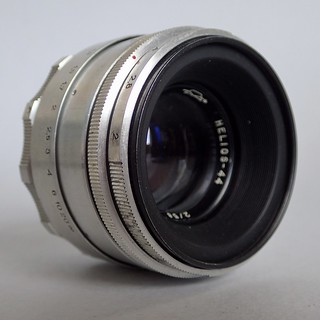
|
| Lens schematic of the Helios-44 f/2 58mm image by Dirk HR Spennemann (Image rights) |
Helios-44 (Гелиос-44) is a series of standard lenses for SLR cameras, produced from 1949? until 1992 (2001?) in the Soviet Union by KMZ, MMZ, and by Valdai. The Helios-44 is it is considered to be one of most mass-produced lenses in the world. The lens is based on the Carl Zeiss Biotar f/2 58mm design.[1] The Helios-44 f/2 58mm is a 6-element anastigmat, which over the duration of its production was available in both single-coated and multi-coated versions. Helios-44 is has a strong aberration at the margins, resulting in a characteristic 'swirl' which is reminiscent of Petzval lenses.
The nomenclature of all bar the first (silver-cased) Helios lenses follows the formula 'Helios-44X-N', where X -is the index of lens mount (M for M42 thread, K for Pentax K bayonet, Д for Zenit-D bayonet) and N is a optical resolution index 2, 3, 4, 5, 6, 7 (the higher number the higher is an optical resolution of lens).
Technical Specifications
Focal Distance: 58mm (may vary in reality).
Aperture Range: ƒ/2 - ƒ/16 (ƒ/22)
Optical Formula: 6 elements in 4 groups.
Angle of View: 40°28
Geometric Vignetting: 58%
The arrangement of the focussing helicoid as well as the aperture selector ring differs between models. In the table below, the arrow ← indicates the direction the aperture control ring needs to be turned to increase the ƒ-stops.
Model |
Maker |
Lens Mount |
Weight |
Number of Aperture Blades |
Minimum Focusing Distance |
Maximum Aperture |
Filter Diameter |
Resolution center/edge lines/mm |
Trans- mittance |
Color Formula |
Sequence (from lens face) |
References |
|---|---|---|---|---|---|---|---|---|---|---|---|---|
| Helios-44 (Start) | KMZ | Start | 230g | 13 | 0.7m | ƒ/16 | M40.5x0.5 | 35/14 | .81 | 10-0-1.5 | focus, ƒ← | |
| Helios-44 | KMZ | LTM | 230g | 13 | 0.5m | ƒ/22 ƒ/16 |
M49.5x0.75 | 35/14 | ƒ→ , DoF, focus | [2] | ||
| KMZ | Arri PL | 230g | 13 | 0.5m | ƒ/22 ƒ/16 |
M49.5x0.75 | ƒ→ , DoF, focus | |||||
| KMZ | LTM | 230g | 8 | 0.5m | ƒ/22 ƒ/16 |
M49.5x0.75 | ƒ→ , DoF, focus | |||||
| MMZ | LTM | ¶g | 8 | 0.5m | ƒ/16 | M49x0.75 | ƒ→ , focus | [3] | ||||
| Helios-44-2 | KMZ | M42 | 230g | 13 | 0.5m | ƒ/16 | M49x0.75 | 38/20 | 0.82 | 10-0-1.5 | ƒ→ , focus | [4] |
| Helios-44-7 | KMZ | M42 | 350g | 8 | 0.5m | ƒ/16 | M49x0.75 | 36/17 | 0.80 | 10-0-1.5 | ||
| Helios-44-M | KMZ | M42 | ¶g | 8 | 0.5m | ƒ/16 | focus, ƒ→ | |||||
| Helios-44M-3 | KMZ | M42 | 300g | 8 | 0.5m | ƒ/16 | 38/19 | 0.80 | 10-0-1.5 | ƒ→ , focus | ||
| Helios-44M-4 | KMZ | M42 | 300g | 8 | 0.5m | ƒ/16 | 38/19 | 0.80 | 10-0-1.5 | focus, ƒ→ | ||
| Helios-44-N | KMZ | M42 | ¶g | 8 | 0.5m | ƒ/16 | ||||||
| Helios-44X-N | KMZ | M42 | ¶g | 6 | 0.5m | ƒ/16 | M52x0.75 | |||||
| MC Helios-44K-4 | KMZ | Pentax K | 300g | 8 | 0.5m | ƒ/16 | 42/21 | 0.85 | 11-0-0 | focus, ƒ→ | ||
| MC Helios-44M-3 | KMZ | M42 | 300g | 8 | 0.5m | ƒ/16 | 0.85 | 11-0-0 | ƒ→ , focus | |||
| MC Helios-44M-4 | KMZ | M42 | 300g | 8 | 0.5m | ƒ/16 | 41/20 | 0.85 | 11-0-0 | |||
| MC Helios-44M-5 | KMZ | M42 | 270g | 8 | 0.5m | ƒ/16 | 41/20 | 0.85 | 11-0-0 | focus, ƒ→ | ||
| MC Helios-44M-6 | KMZ | M42 | 270g | 8 | 0.5m | ƒ/16 | 45/25 | 0.90 | 11-0-0 | focus, ƒ→ | ||
| MC Helios-44M-7 | KMZ | M42 | 270g | 6 | 0.5m | ƒ/16 | M52x0.75 | 50/30 | 0.90 | 11-0-0 | focus, ƒ→ |
Typology of the silver-barrelled Helios-44 lenses (early versions)
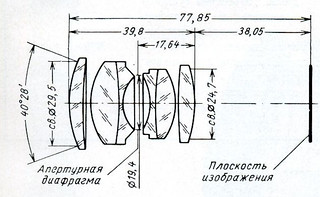
|
| Lens schematic of the Helios-44 f/2 58mm image by Dirk HR Spennemann (Image rights) |
The early Helios lenses are housed in aluminium barrels. Reputedly, the serial numbers of the early Helios lenses are structured according to the following pattern:[5]
000xxxx factory test (study) models, prototypes etc..
00xxxxx models reserved for members of the communist party and other "VIPs" .
0xxxxxx reserved for factory syndicat leaders.
All lenses with a '0', '00' and '000' prefix reputedly underwent higher quality control.
Additional variations exist in the representation of the serial number prefixes. Observed have been N and Nº, whereby the 'N" appears on some of the earlier models.
Helios 44 (Start)
Mechanically, the Helios lens for the Start SLR differs from all other Helios-44 lenses inasmuch as the focussing ring is up front and the aperture selector at the rear. Moreover, the lens for the Start lacks the preset function of the other early models. Aperture selection with f-stops increasing in clockwise motion.
- Type 1— f-stops to f/22; bezel text that spells out '1:2 F=5,8cm' with a Cyrillic P (Π) in red, silver front bezel ring. Released 1958.[6]
Helios-44 (LTM)
Pre-set prime lens. The fixed lens stops have with audible clicks, while the stop-down ring (to check the depth of field) allows for a smooth contraction of the diaphragm. Aperture selection with f-stops increasing in counter-clockwise motion (differs from the Helios version used on the Start)..
- Type 1—pre-set lens with f-stops to f/22; bezel text that spells out '1:2 F=5,8cm' with a Cyrillic P (Π) in red, silver front bezel ring, sn 000xxxx–0017xxx. Initially used for the KMZ Kristall released in 1961 and the KMZ Zenit 3M.
- Type 2— pre-set lens with f-stops to f/16
- Type 2a—bezel text that spells out '1:2 F=5,8cm' with a Cyrillic P (Π) in red, and a silver front bezel ring, sn 0016xxx [8]
- Type 2b—bezel text "2/58" and the 'silver' front bezel ring produced by KMZ
- Type 2c—bezel text "2/58" and 'black' front bezel ring, 13-blade diaphragm produced by KMZ until the late 1950s, sn –0225xxx
- Type 2d—bezel text "2/58" and 'black' front bezel ring, 8-blade diaphragm, produced by KMZ until the late 1950s, sn 024447x–
- Type 2e—bezel text "2/58" and black front bezel ring, 8-blade diaphragm, produced by MMZ until the mid 1960s[17]
Helios-44-2 (M42)
- Type 1— pre-set lens with bezel text "2/58" and the 'silver' front bezel ring produced by Valdai
|
|
| ||||||
|
KMZ-produced Helios-44 f/2 58mm for Start SLR | ||||||||
|
|
| ||||||
|
KMZ-produced Helios-44 f/2 58mm Type 2cii | ||||||||
|
|
| ||||||
|
Lens Bezel inscriptions of KMZ-produced Helios-44 f/2 58mm
| ||||||||
Sample Images
|
|
| ||||||
|
Sample images taken with a Helios-44 Type Type 2cii mounted on a Nikon D800 | ||||||||
Notes
- ↑ At the beginning the lens was to be called "БТК" - "БиоТар Красногорский" (BioTar Krasnogorski).
- ↑ For photo series see discussion thread for this image
- ↑ Seen on eBay sn/6012651, English labelling, engraved "Made in USSR'.
- ↑ Manufactured from 1971 by KMZ and MMZ, in 1974 production moved to Jupiter Optics Valdai, in 1982/83 production moved back to to MMZ
- ↑ | A Word about Russian Serial Numbers
- ↑ Seen on eBay: sn/ 0005085 (with Start body #5904339); 0005292 (with Start body #6317417); 0014131; 0014167 (with Start body #6100790); 0016442
- ↑ Seen on eBay: sn/ 0043802 (with Start body #6388722); 0051838 0052784 (with Start body #6120968); 0057844 (with Start body #6112545); 0063978 (with Start body #6114645); 0060810 (with Start body #6114785); 0069922; 0075924 (with Start body #6119536); 0101830 (with Start body #6315633); 0121214 (with Start body #6226892);
- ↑ Seen on eBay: sn/0016709; 0018687, 0023907
- ↑ Seen on eBay: sn/0068221; 0059418; 0158550; 0275085
- ↑ Seen on eBay: sn/0120173
- ↑ Seen on eBay: sn/0030453, 0127713
- ↑ Photographica Collection Dirk HR Spennemann sn/0085902; 0205436
- ↑ Seen on eBay: sn/0120173
- ↑ Seen on eBay: sn/02887790
- ↑ Seen on eBay: sn/0275083
- ↑ Seen on eBay: sn/0254198, 0275083
- ↑ MMZ lenses with serial numbers beginning with "N40xxx", "N50xxx" or "N60xxx" were most likely made in 1964, 1965 and 1966 (first number of sn very likely stands for the year of 196x decade).
- ↑ Seen on eBay: sn/5011275 ; 5014399; 5038818
- ↑ Seen on eBay: sn/6002494 (on Zenit3M); 6012651, 6024306.
- ↑ Seen on eBay: sn/8708916
- ↑ Seen on eBay: sn/79220381; 80003408; 81276436; 81293022
- ↑ Seen on eBay: sn/7654512.
Bibliography
Машиностроение (1968) Каталог "Любительская фотокиноаппаратура" (Katalog Photokinoapparatura) Moscow: Машиностроение pp. 232–234
